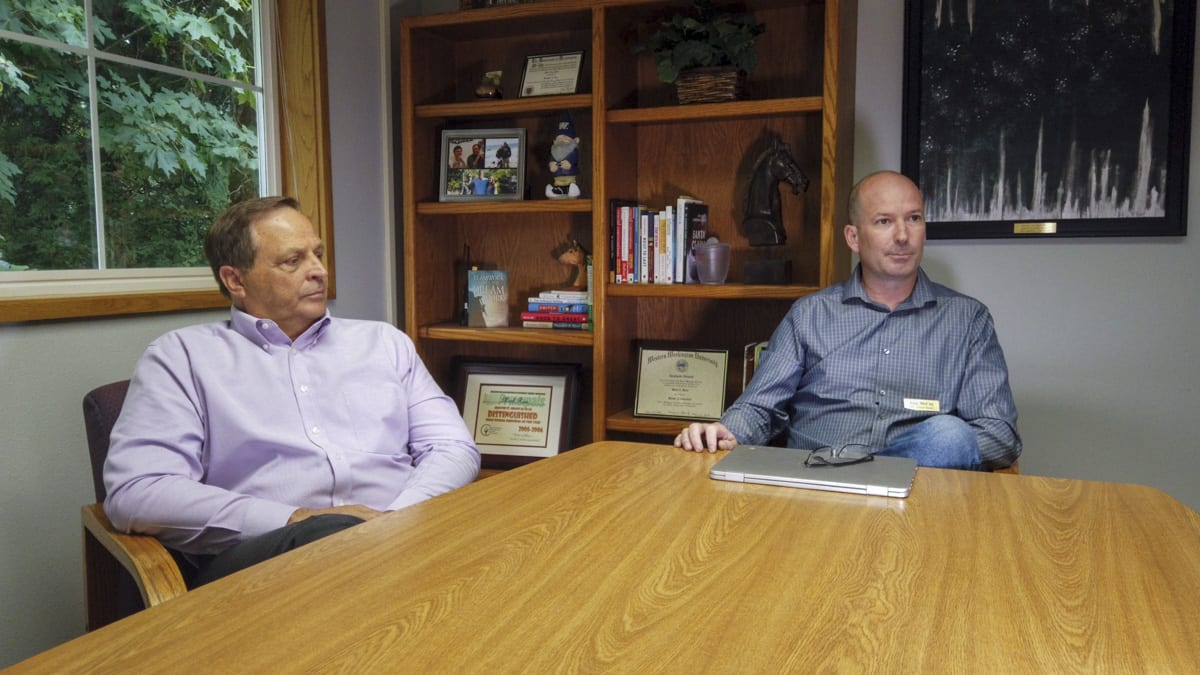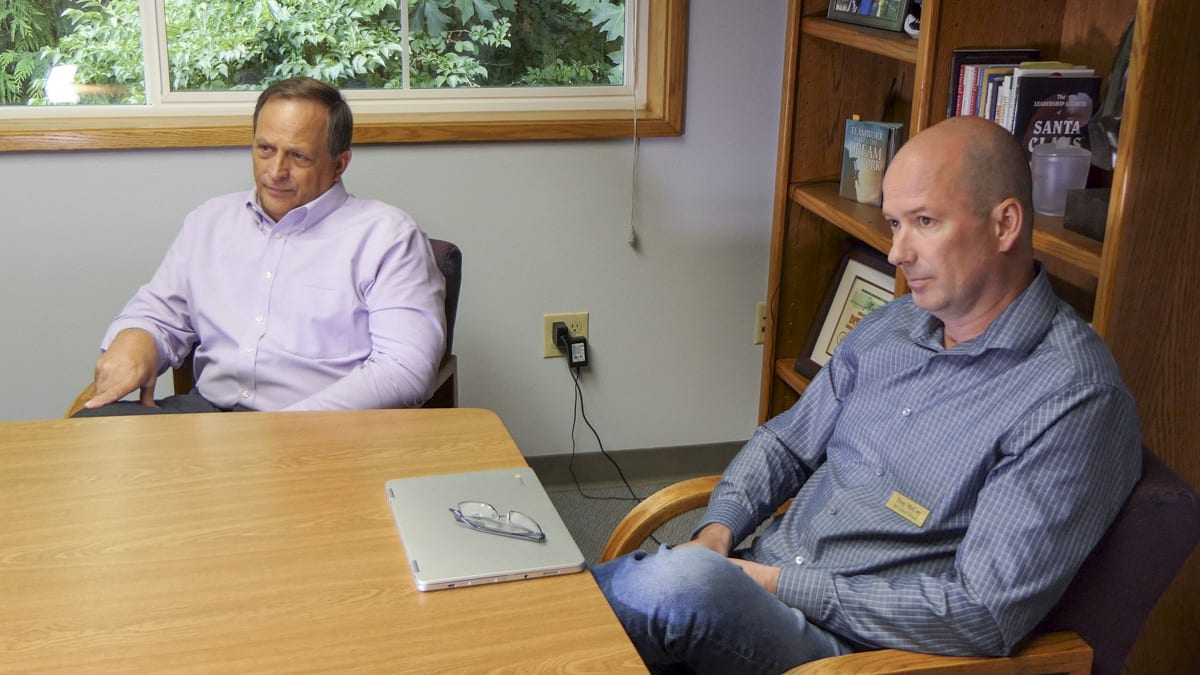The district was able to take advantage of the legislature’s levy lid increase to avoid budget cuts and pursue capital projects
BATTLE GROUND — Voters in the Battle Ground School District likely won’t be asked to vote on a building bond, at least for the next year or two.
The decision is thanks in part to redistricting efforts after the last bond measure failed to garner the required 60 percent support, and the legislature’s decision earlier this year to bump the maximum local levy from $1.50 per $1,000 of assessed property value to $2.50 per thousand.
“I think the thinking that we have a bond falling off in 2023,” says School Board President Troy McCoy. “And getting some of that money into facilities, [it] would allow us to maybe not even look for a bond until that first one falls off.”

Prior to the legislature’s decision to raise statewide property taxes in exchange for capping local rates in 2017, Battle Ground voters had approved a four-year maintenance and operations levy at a rate of $3.45 per $1,000. Unlike districts who passed bonds at the lower rate earlier this year, members of the Battle Ground School Board had the option of bumping to the higher rate without going back to the voters.
“When the legislature rolled us all the way back to $1.50 that basically cut our levy in half, what we were able to spend and utilize that levy for,” says District Superintendent Mark Ross, “and in the meantime, our expenses continue to increase with our [costs] around special education that’s not totally funded by the legislature, and the benefits that are going up now with our employee costs.”
The latter costs from the State Employee Benefit Board (SEBB), which this year has mandated that unused benefits (IE, if an employee declines coverage) should go back to the state to be redistributed. Previously those cost savings could be spread back out among district employees.
Despite the higher local rate of $2.50, and an existing bond rate of $0.61 per $1,000 (expected to be $0.59 in 2020), Ross and McCoy are quick to point out that Battle Ground’s total tax rate of $3.11 is still among the lowest in Clark County. Green Mountain is the only one lower at a rate of $2.77, while Woodland is next highest at $3.13.
“I think the board wanted to be sensitive to our voters and our taxpaying citizens, realizing that with a bump, we’re moving up to that $2.50,” says Ross. “But by not running a bond until the 2005 bond sunsets in 2023, we’ll have the ability in 2022 … to be able to say ‘okay, it’s truly a replacement bond.’”
Aside from the levy lid lift giving them enough money to balance the budget and handle some capital improvements, there is growing consensus earlier student population estimates that drove the earlier bond conversation have, so far, not panned out.
“Originally, we were under the impression that with all these people moving in, they’d be coming in with children,” says McCoy. “That doesn’t seem to be the case as much.”
McCoy says higher home prices may be preventing families with younger children from moving into the area, or people are simply delaying having children until later in life. Whatever the case, the district has seen a drop of around 500 students in just the past year. That means the district is bringing in less state funding, but it’s also reducing the urgency of building new schools right away.
At the moment, McCoy says, he’s hesitant to pursue future studies about population growth, given the fact that the last one apparently missed so badly.
“I think what surprised us was our primary or elementary enrollment not coming in as projected,” says Ross. “I mean, just by doing a visual around the district, you see all the homes and you see the development and the building, and you can almost project to see an increase, but we didn’t see that.”
It seems largely impossible that enrollment will continue to decline, especially with Clark County this week clearing the way for what could be massive growth near I-5 and 179th Street, a large portion of which is in the Battle Ground School District. The city is also looking at major expansion west of their core downtown area over the next decade or so.
“I feel like we have a good relationship with the county and they’ll connect us with the developers,” says Ross, “because that’s my concern is, yes it will open up, but how quickly will we see the houses come in? And how quickly will they develop? So I think planning is going to be key, but kind of knowing that timeline is going to be critical for us.”

The lifting of the levy lid will allow the district to pursue a number of projects that were on the 2018 bond, such as adding a cafeteria at Pleasant Valley, adding middle school sports, and possibly covered play areas at some schools. There will also be security upgrades, including double-door entrances at some schools.
As for what could be done at the state level to improve the district’s budget outlook going forward, McCoy says he’d like to see the statewide salary schedule brought back.
“I think asking your local school boards, your citizen volunteers, to set a salary schedule for teachers is a big ask,” he says. “And I believe that was a lot of the struggle for every district, not just ours.”
McCoy also says the removal of initial caps on salary increases that were removed from the final legislation in the McCleary fix would have also made for simpler negotiations, at least until the funding sources were all cleared up.
Ross added that the state is long overdue for an update to its prototypical school funding model, which has been largely unchanged since 1980.
“In a district our size of 13,000 students, the state funds us for about two nurses,” says Ross. “And we have 18 different buildings, so we know that’s not enough.”
Both Ross and McCoy say they’re well aware that statewide spending on education is expected to increase by more than double by 2021 from 2017 levels, but they argue that investment in basic education had lagged behind in the past 20 to 30 years, while schools have increasingly been asked to provide more basic services beyond an education.
“Specifically, in the area of social services, we now have mental health counselors in all of our schools,” says Ross, “we now have intervention/prevention specialists in our middle schools and high school.”
Ross says he has no qualms with schools providing resources for guidance and mental health, but wonders if, perhaps, funding should come out of the state’s Social Services budget, rather than education dollars.
“We were fortunate enough to receive a federal grant that funded a lot of our efforts around social emotional learning,” Ross says. “Unfortunately, it was a five year grant and it’s played out. But we are committed to keeping those services for our students and for our staff. And so, again, that means dipping into our levy funds to be able to do some of those things.”




